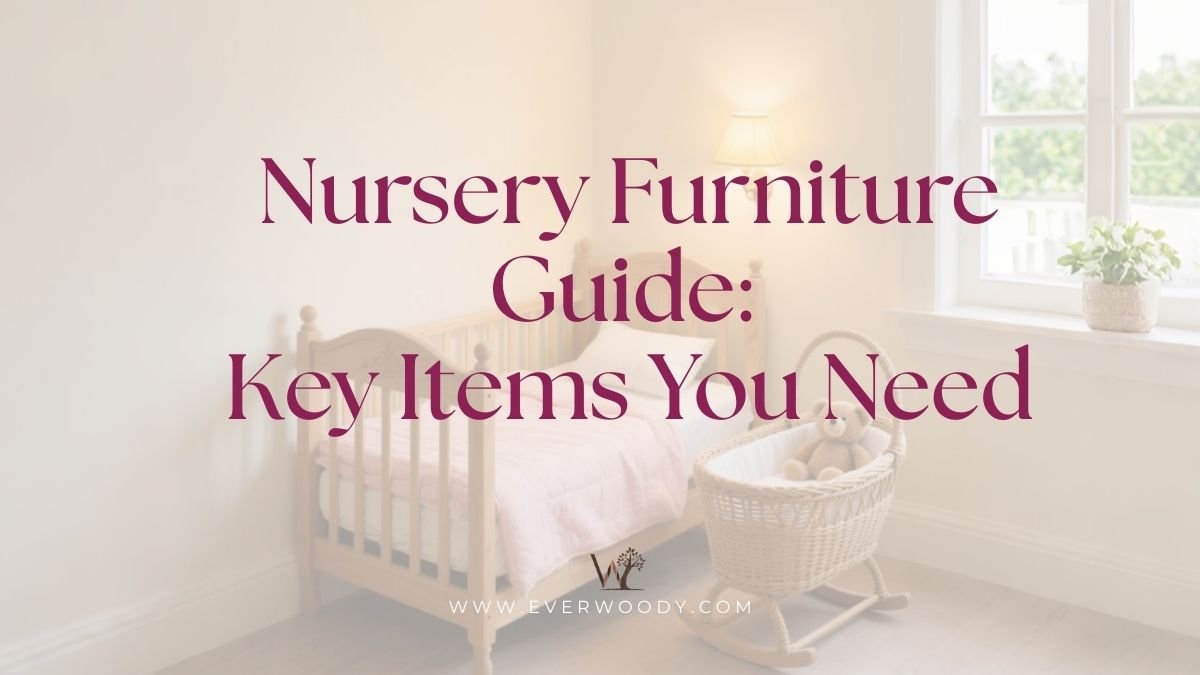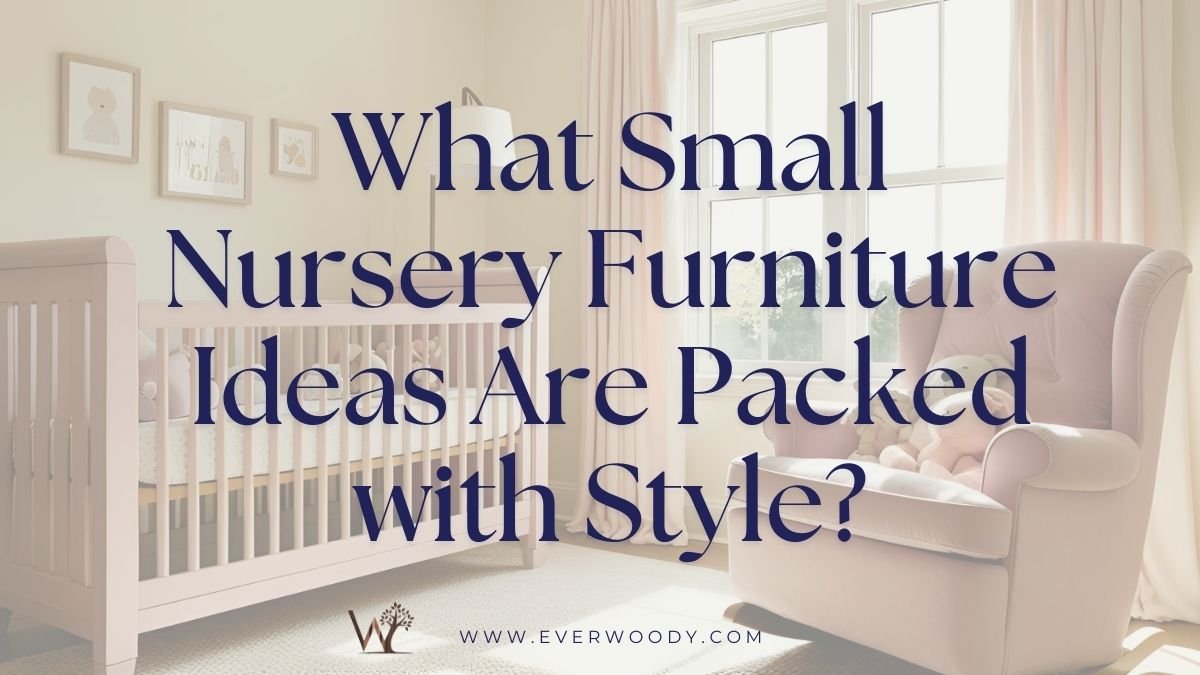Step into a preschool classroom where every corner tells a story. Vibrant walls brimming with playful colors, interactive displays that spark curiosity, and cozy nooks inviting imagination—this is where creativity meets learning. A well-decorated space isn’t just pretty; it’s a launchpad for young minds to explore, grow, and thrive.
Children are naturally drawn to their surroundings. The right decorations transform a room into a dynamic world of discovery. From whimsical themes to clever organizational touches, the perfect decor doesn’t just inspire—it fuels engagement and joy.
Ready to create a classroom that ignites wonder and fosters endless possibilities? Let’s dive in!
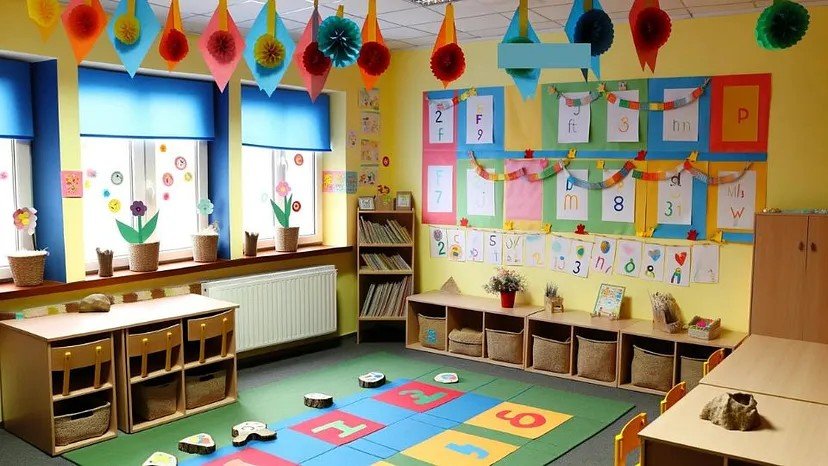
I. Creating a Welcoming Environment
The first step to a successful preschool classroom is making it feel warm, exciting, and inviting. A welcoming environment helps children feel secure and eager to learn.
Entryway Decor Ideas to Set the Tone for Fun and Learning
A well-designed classroom entryway does more than welcome students—it sets the tone for the entire day. This space introduces a sense of excitement and curiosity while fostering emotional connections with the environment.
- Bright and Cheerful Welcome Signs: Use colorful signs featuring playful characters and vibrant designs to greet children warmly. A visually engaging entry instantly creates a positive and inviting atmosphere.
- Interactive “Mood Boards”: Incorporate a “What’s Your Mood Today?” display with movable elements, like emoji faces or colored tokens, allowing children to express their feelings upon arrival. This builds emotional awareness and strengthens the teacher-student connection.
- Seasonal and Thematic Decor: Reflect the changing seasons or classroom themes with simple yet eye-catching decorations, like fall leaves, spring blossoms, or winter snowflakes. Rotating decor not only refreshes the space but also ties lessons to real-world changes, keeping students engaged and curious.
Personalized Name Tags and Cubbies for a Sense of Belonging
Personalization in the classroom fosters a sense of community.
- Decorated Cubbies: Assign each child a cubby with their name and a fun design like animals or stars. It helps with organization and gives children their own space.
- Creative Name Tags: Use name tags shaped like crayons, clouds, or other playful designs that tie into the overall theme of the room. This shows children that their individuality is valued.
- DIY Projects: Involve students in creating their own name tags with craft supplies. It makes them feel like part of the classroom setup.
Incorporating Bright Colors and Cheerful Themes
Color has a direct impact on mood and focus. Choose shades and designs that stimulate young minds.
- Bright Primary Colors: Reds, yellows, and blues are attention-grabbing and stimulate creativity. Balance them with softer hues for a calming effect.
- Cheerful Wall Art: Include fun images like animals, trees, or rainbows that tie into educational concepts. For instance, a rainbow could connect to lessons about weather or colors.
- Durable Materials: Opt for decorations made with long-lasting, child-safe materials that can withstand daily interaction.
II. Themed Classroom Setup
Creating a themed setup brings cohesion to the classroom while making learning fun and engaging.
Seasonal Decorations to Celebrate the Time of Year
Themes inspired by the seasons provide endless opportunities for creativity.
- Spring: Use flower cutouts, butterflies, and raindrop mobiles to celebrate new beginnings. Incorporate these into lessons about plants or weather.
- Summer: Bright suns, ocean waves, and sandcastle visuals can introduce topics like nature and geography.
- Winter and Fall: Incorporate snowflakes, pumpkins, and cozy motifs like mittens to reflect seasonal changes while teaching related concepts.
Nature-Inspired Decor for a Calming and Grounding Atmosphere
Bringing nature into the classroom creates a soothing environment.
- Potted Plants: Include easy-to-maintain plants that add life and improve air quality. Consider letting children water them to teach responsibility.
- Wooden Elements: Use eco-friendly wooden decorations or furniture for a natural and sustainable aesthetic.
- Natural Light and Colors: Maximize natural light and use earthy tones like greens and browns for a peaceful vibe.
Holiday Themes to Add Excitement and Seasonal Relevance
Holidays are a fantastic way to add excitement while teaching cultural awareness.
- Multicultural Celebrations: Include decor for holidays like Lunar New Year, Diwali, or Christmas to embrace diversity.
- Interactive Holiday Activities: Create a countdown calendar or a holiday-themed bulletin board where children can participate.
- Rotating Displays: Change decorations for major holidays to keep the classroom feeling fresh and festive.
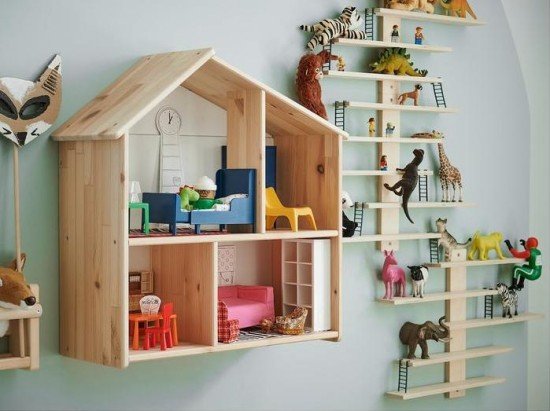
III. Engaging Bulletin Boards
Bulletin boards are more than just decorative—they’re powerful tools for learning and engagement.
Interactive Bulletin Board Ideas to Engage Students
Interactive boards turn passive displays into active learning opportunities.
- Letter of the Week: Add a section where kids can attach pictures or words starting with a featured letter. It reinforces literacy skills in a fun way.
- Math Puzzles: Incorporate simple number games or matching activities on the board to keep math lessons interactive.
- Student Contributions: Dedicate a section where children can pin up their weekly projects or drawings.
Displaying Student Artwork as Part of the Decor
Artwork displays build pride and foster creativity in kids.
- Rotating Art Gallery: Regularly swap out student artwork to ensure everyone gets a moment in the spotlight.
- Theme-Based Displays: Align the displayed art with ongoing lessons, like animals during a biology unit or shapes for geometry.
- Artistic Patterns: Use borders and arrangements that make each piece stand out, such as decorative frames or colorful mats.
Using Educational Wall Art to Reinforce Learning Concepts
Wall art can turn blank spaces into learning opportunities.
- Alphabet and Number Charts: Choose charts with vibrant designs to make letters and numbers visually appealing.
- Motivational Quotes: Add quotes that encourage curiosity and kindness, like “Explore, Dream, Discover.”
- Visual Aids: Display lifecycle diagrams, world maps, or weather charts that tie into daily lessons and themes.
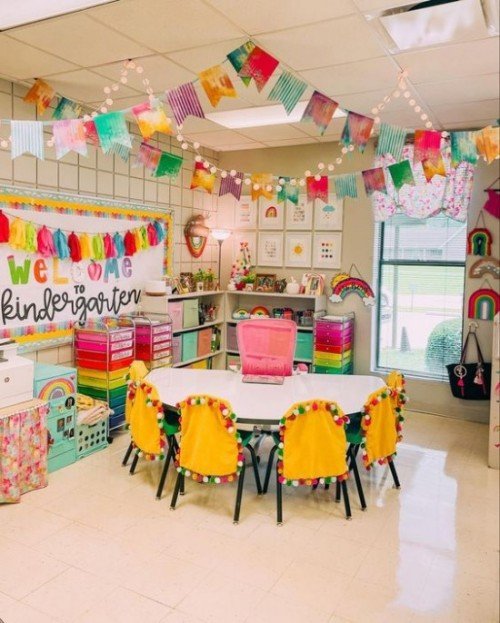
IV. Alphabet and Number Corners
Creating dedicated spaces for letters and numbers transforms abstract concepts into tangible learning experiences.
Creative Alphabet Charts That Double as Visual Aids
In our classroom, I incorporate engaging alphabet charts that serve as both decor and educational tools.
- Interactive Alphabet Walls: We display large, colorful letters accompanied by corresponding images, such as ‘A’ with an apple. This visual association aids in letter recognition and vocabulary building.
- Tactile Letter Boards: By using materials like sandpaper or felt, children can trace letters with their fingers, enhancing fine motor skills and reinforcing letter shapes through touch.
- DIY Alphabet Crafts: Engaging students in creating their own alphabet charts fosters ownership and reinforces learning. For example, each child can decorate a letter, and we compile them into a collaborative display.
Number Lines and Math-Themed Wall Art
To make numbers approachable, I integrate visual aids that depict numerical concepts.
- Colorful Number Lines: A vibrant number line displayed at eye level helps children understand sequencing and basic arithmetic. We often use it during counting exercises and simple addition or subtraction activities.
- Math-Themed Posters: Posters featuring shapes, patterns, and counting visuals serve as constant references, reinforcing mathematical concepts throughout the day.
- Interactive Counting Charts: Charts that allow children to attach or move items, like counting beads or Velcro pieces, make learning numbers a hands-on experience.
DIY Crafts to Teach Letters and Numbers
Hands-on activities deepen understanding and make learning enjoyable.
- Alphabet Adventure Chart: We create a chart with each letter of the alphabet, placing an image or sticker next to each letter representing an object that starts with that letter. This not only teaches the alphabet but also introduces new vocabulary.
- Counting Caterpillar: Crafting a caterpillar with numbered segments allows children to practice counting and number recognition. Each segment can be decorated and numbered, making it a collaborative and educational art project.
- Shape and Color Charts: Designing charts that showcase basic shapes and primary colors helps children learn about shapes and colors simultaneously. Including real-life examples encourages them to identify shapes and colors in their surroundings.
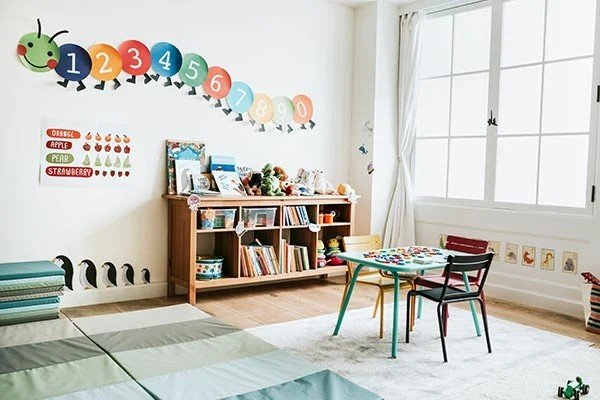
V. Interactive Learning Centers
Designing interactive zones encourages exploration and caters to diverse learning styles.
Sensory-Friendly Spaces for Hands-On Exploration
Sensory play is crucial for cognitive and motor development.
- Sand and Water Tables: These stations allow children to explore textures and concepts like volume, enhancing sensory experiences. We rotate materials to include rice, beans, or foam for variety.
- Tactile Play Stations: Incorporating materials like playdough, textured fabrics, or sensory bins filled with themed items (e.g., seashells, leaves) stimulates touch and exploration.
- Calming Corners: A quiet area with soft cushions, dim lighting, and sensory bottles provides a retreat for children needing a sensory break, promoting self-regulation.
Play-Based Learning Zones with Themed Setups
Themed areas make learning immersive and fun.
- Pretend Play Areas: Setups like a mini grocery store or kitchen encourage role-playing, teaching social skills and practical knowledge. We stock these areas with relevant props to enhance realism.
- Artistic Patterns Station: An art corner equipped with various craft supplies allows children to express creativity while learning about colors, shapes, and textures. Displaying their artwork boosts confidence and adds to the classroom’s aesthetic.
- Science Exploration Table: Rotating themes such as ‘Insects’ or ‘Space’ with related objects and books spark curiosity and provide hands-on learning opportunities.
Storytime Corners with Cozy and Imaginative Decor
A dedicated reading area fosters a love for books and storytelling.
- Comfortable Seating: Bean bags, soft rugs, or a small couch create an inviting space where children feel comfortable reading.
- Themed Decor: Decorating the area to resemble a forest or castle adds an element of magic, making storytime an adventure.
- Accessible Bookshelves: Low shelves stocked with a diverse range of books encourage independent selection and exploration.
VI. Durable and Child-Friendly Designs
Selecting appropriate materials ensures safety and longevity in a preschool setting.
Choosing Materials That Withstand Wear and Tear
Classroom items must endure daily use.
- Sturdy Furniture: Investing in tables and chairs made from high-quality, durable materials prevents frequent replacements and ensures safety.
- Washable Fabrics: Using cushions and rugs with removable, machine-washable covers maintains hygiene and extends their lifespan.
- Laminated Educational Wall Art: Laminating posters and charts protects them from damage, keeping the classroom looking fresh and engaging.
Safe and Age-Appropriate Designs for Preschoolers
Safety is paramount in early childhood education environments.
- Rounded Edges: Furniture with rounded corners reduces the risk of injuries from bumps and falls.
- Non-Toxic Materials: Ensuring all paints, adhesives, and fabrics are free from harmful chemicals protects children’s health.
- Secure Storage Solutions: Utilizing child-proof latches on cabinets and shelves keeps hazardous items out of reach, maintaining a safe environment.
Eco-Friendly and Sustainable Options for Classroom Decorations
Sustainability is a growing priority in preschool classroom decorations, benefiting both children and the planet.
- Reusable Materials: Choose decor that can be easily repurposed, such as modular wall art or interchangeable bulletin board designs. These options reduce waste and adapt to different themes.
- Eco-Friendly Craft Supplies: Use non-toxic, biodegradable materials for DIY projects, like recycled paper, natural fibers, or plant-based paints. These materials ensure safety while promoting environmental responsibility.
- Upcycled Decorations: Incorporate upcycled items like jars for storage, cardboard for creative displays, or old fabric for banners. This teaches children the value of reusing materials creatively.
- Energy-Efficient Lighting: Swap standard bulbs for LED lights to create a more energy-efficient and child-friendly space, while also reducing long-term costs.
- Wooden Furniture and Accessories: Opt for sustainably sourced wooden items that add a natural touch to the classroom while being durable and safe for preschoolers.
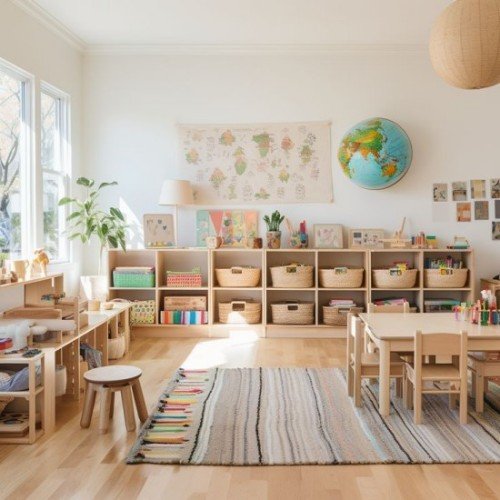
VII. Flexible Seating and Arrangement
A well-designed classroom arrangement is essential for creating a dynamic and functional learning space. Flexible seating options and strategic layouts cater to different activities and learning styles.
Ideas for Space-Saving Furniture and Arrangements
Optimizing space allows for a clutter-free, organized environment where children can move and explore freely.
- Stackable Chairs and Tables: Lightweight, stackable furniture can be easily moved or stored, making the space versatile for various activities.
- Multi-Purpose Storage Benches: Benches that double as storage units keep classroom supplies organized while providing seating options.
- Wall-Mounted Shelving: Utilizing vertical space for creative storage solutions helps keep the classroom tidy and maximizes floor space for interactive displays and imaginative play areas.
Incorporating Flexible Seating for Dynamic Learning Experiences
Flexible seating arrangements foster collaboration and independent learning in equal measure.
- Bean Bags and Floor Cushions: These seating options are great for circle time, storytime corners, or quiet reading areas, offering comfort and mobility.
- Standing Desks for Active Learners: Adjustable-height desks cater to children who prefer to stand, supporting different physical needs and promoting engagement.
- Moveable Pods: Small seating pods that can be grouped for collaborative activities or separated for individual focus add versatility to the classroom arrangement.
Creating Quiet Zones for Individual Focus and Relaxation
Quiet zones provide children with a calm retreat when they need a moment to relax or work independently.
- Canopy Tents: Setting up a small tent or nook creates a cozy, enclosed area for downtime.
- Colorful Rugs: Bright but calming rugs help define the quiet zone, offering a tactile element that supports sensory-friendly spaces.
- Soft Lighting and Nature-Inspired Decor: Warm lights and natural elements like small potted plants or wooden decor create a soothing ambiance that encourages focus.
VIII. Motivational and Inspirational Touches
Motivational and inspirational elements are essential in fostering emotional growth and cognitive development in young learners. These touches not only encourage positivity but also contribute to the classroom’s welcoming and stimulating atmosphere.
Incorporating Motivational Quotes to Inspire Young Learners
Motivational quotes serve as powerful tools to uplift children and instill values that resonate throughout their learning journey.
- Place vibrant, easy-to-read quotes at children’s eye level on walls or bulletin boards. Phrases like “You Can Do It!” or “Kindness Starts Here” create daily reminders of encouragement.
- Design interactive quote boards where students can share their own favorite affirmations, allowing them to feel connected and inspired by their peers.
- Align motivational messages with classroom themes, such as using “Explore, Dream, Discover” for a nature-inspired decor or “Every Day is a Learning Adventure” for a travel-themed setup, reinforcing both the decor and educational values.
Artistic Patterns and Vibrant Murals for Visual Stimulation
Eye-catching designs energize the learning environment and stimulate creativity.
- Themed Murals: Paint walls with artistic patterns or playful murals, like a jungle or outer space, to bring lessons to life visually.
- Decorative Borders: Use borders featuring alphabet charts, colorful shapes, or seasonal decorations to frame learning areas and add a polished look.
- DIY Wall Art Projects: Engage students in creating their own wall art using craft supplies, which can be rotated periodically to keep the classroom fresh.
Positive Reinforcement Displays for Student Achievements
Recognizing achievements encourages a growth mindset and builds confidence.
- Student Artwork Displays: Dedicate a wall or bulletin board to showcasing student creations, reinforcing the value of their contributions.
- Achievement Charts: Use interactive displays like sticker charts to celebrate milestones, whether it’s learning new letters or completing a task.
- Personalized Name Tags on Displays: Highlight individual accomplishments with tags or labels, ensuring every child feels acknowledged.
IX. Storage Solutions with a Decorative Flair
Combining functionality with aesthetics, storage solutions can be a seamless part of your classroom’s overall design while keeping the space organized.
Creative Storage Ideas That Enhance Classroom Aesthetics
Storage solutions can be both functional and visually appealing, helping create an organized, inspiring classroom environment.
- Vibrant, Thematic Bins: Use bins in bright colors or patterns that match your preschool themes, such as jungle animals, rainbows, or geometric shapes. This adds a cohesive and playful touch while keeping supplies easy to access.
- Wall-Mounted Organizers: Install hanging baskets, magnetic strips, or fabric pouches on walls to maximize vertical space. These are perfect for frequently used classroom supplies, like flashcards or small craft items, while keeping surfaces clutter-free.
- Decorative Shelves for Displays: Arrange open shelves to feature student artwork, miniature models, or educational wall art. These displays not only add charm but also reinforce current lessons and themes.
- Labeled Containers for Clarity: Add clear labels with pictures and words to storage containers. This helps young learners identify and return items independently, fostering organization and responsibility.
- Multi-Purpose Furniture: Invest in storage benches or rolling carts that double as seating or portable workstations. These options save space while maintaining flexibility for various classroom activities.
Incorporating Labeled Bins and Shelves for Organization
Labels make it easier for both students and teachers to keep things tidy.
- Picture Labels for Young Learners: For non-readers, labels with pictures (e.g., a crayon for craft supplies) help children quickly identify where items belong.
- Thematic Label Designs: Align labels with the classroom’s themed setup, such as using nature-inspired decor for a forest theme.
- Transparent Storage: Clear bins allow for easy visibility of contents while maintaining a neat and organized appearance.
Multifunctional Furniture for Small Classrooms
Maximizing utility is key in smaller spaces.
- Storage Benches: Benches with hidden compartments provide seating while doubling as storage for learning centers or storytime corners.
- Rolling Carts: Portable carts can store seasonal decorations or supplies for play-based learning decor and move easily between activities.
- Stackable Solutions: Space-saving furniture like stackable cubbies or modular units can be rearranged to adapt to changing classroom needs.
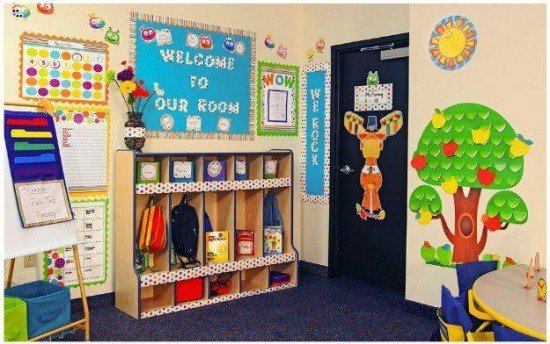
X. DIY Decoration Ideas
DIY decoration ideas are a fun and budget-friendly way to personalize your classroom while engaging students in the process.
Easy and Cost-Effective Decoration Projects for Teachers
Teachers can add a creative touch to their classrooms without overspending.
- Recycled Paper Garlands: Use colorful scraps from old projects or recycled craft supplies to create garlands with fun shapes like stars, hearts, or seasonal motifs. Hang them in storytime corners or along classroom walls for an instant pop of color.
- Upcycled Storage Jars: Turn empty jars into vibrant holders for pencils, brushes, or small craft supplies by decorating them with non-toxic paint, washi tape, or ribbons. Group them by color or theme for a polished look that doubles as functional decor.
- DIY Seasonal Wreaths: Craft wreaths from eco-friendly materials, such as twigs, fabric scraps, or paper leaves. Add details like small student-made crafts to reflect the season, making them a personalized touch for classroom doors or bulletin boards.
- Hanging Mobile Decorations: Use lightweight materials like felt or card stock to create hanging mobiles with shapes related to your preschool themes—like animals, numbers, or weather symbols. These add visual interest without taking up floor space.
- Framed Student Artwork: Repurpose old picture frames to display student artwork. Decorate the frames with stickers or painted patterns to tie them into your classroom’s aesthetic while celebrating creativity.
Collaborative Craft Projects Involving Students
Involving students in classroom decoration fosters creativity and teamwork.
- Handprint Murals: Each child adds their painted handprint to a collective mural, which becomes a memorable part of the classroom decorations.
- Themed Mobiles: Students create individual pieces (e.g., stars for a space theme or flowers for spring) to assemble into a decorative mobile.
- Personalized Name Tags: Have children decorate their own name tags with markers, stickers, or craft supplies, then use them for cubbies or desks.
Repurposing Classroom Supplies into Decorative Items
Repurposing existing items can save money and teach sustainability.
- Cardboard Frames: Turn cardboard into frames for student artwork displays. Paint them with artistic patterns for a polished look.
- Bottle Cap Art: Collect and use colorful bottle caps to create wall art or letter charts, reinforcing the importance of recycling.
- Old Fabrics for Banners: Use leftover fabric scraps to make banners or decorative borders that complement your themed classroom setup.
XI. Visual and Cognitive Development Aids
A classroom rich in visual aids and thoughtful designs helps children thrive both academically and developmentally.
Incorporating Visual Aids for Early Childhood Education
Visual aids are a cornerstone of effective learning for preschoolers.
- Alphabet and Number Charts: Display charts with bold letters and numbers, integrating playful imagery like animals or shapes to make learning engaging.
- Lifecycle Diagrams: Use visual aids like butterfly lifecycle posters to teach scientific concepts in a simple, interactive way.
- Interactive Displays: Incorporate movable elements, like flip boards or Velcro visuals, to make lessons hands-on and memorable.
Using Colors and Patterns to Stimulate Cognitive Growth
The strategic use of colors and artistic patterns can foster creativity and cognitive skills.
- Bright Colors in Key Areas: Use vibrant hues in learning centers to grab attention and focus children’s energy. Calmer tones in storytime corners or quiet zones can create a soothing effect.
- Patterned Rugs and Mats: Add colorful rugs featuring patterns like hopscotch or alphabet trails, doubling as a playful learning tool.
- Thematic Wall Art: Include nature-inspired decor, such as tree motifs or ocean scenes, to spark curiosity and tie lessons to real-world themes.
Age-Appropriate Designs to Keep Students Engaged
Designs that align with preschoolers’ developmental needs help maintain focus and interest.
- Interactive Learning Boards: Create boards with textures and movable pieces, such as tactile number lines or alphabet games, to support cognitive development aids.
- Child-Sized Furniture: Use furniture scaled for little learners to ensure comfort and accessibility, making every part of the classroom feel approachable.
- Eco-Friendly Materials: Incorporate durable, non-toxic materials that are safe for exploration while setting an example for sustainability.
XII. Enhancing Imaginative Play
Imaginative play is vital for social, emotional, and cognitive growth. Designing areas that encourage creativity and pretend play enriches children’s experiences.
Setting Up Imaginative Play Areas with Thematic Decor
Thematic play spaces transport children into new worlds and inspire creativity.
- Miniature Role-Play Stations: Set up spaces like a pretend grocery store, kitchen, or doctor’s office, complete with realistic props and backdrops.
- Seasonal Decorations for Play Areas: Rotate themes to keep imaginative play fresh and exciting, such as a winter-themed “Polar Explorer” station or a summer “Beach Party” corner.
- Flexible Props: Include versatile items like colorful scarves or simple wooden blocks that can transform into anything, from capes to castles.
Creating Role-Play Corners for Social and Emotional Development
Role-playing helps children develop empathy and social skills.
- Costume Corners: Provide costumes like aprons, hats, or animal ears for role-playing scenarios that encourage collaboration.
- Social Story Displays: Use bulletin board ideas to map out social interactions, like “How to Be a Good Friend,” visually guiding students in their play.
- Interactive Puppetry: Add a puppet theater with storytime corners, where children can create and perform their own tales.
Incorporating Props and Costumes into the Classroom Design
Props and costumes add a tactile and immersive element to imaginative play.
- Organized Costume Storage: Use labeled bins or decorative borders on hanging racks to organize and display costumes, keeping them accessible.
- DIY Props from Classroom Supplies: Craft pretend items like cardboard cameras or paper plate masks with the students, using classroom supplies creatively.
- Scene-Setting Decor: Transform walls with artistic patterns or themed backdrops, like a jungle or outer space, to make the play area more immersive.

XIII. Craft Supplies and Art Corners
Craft supplies and dedicated art corners are essential in nurturing creativity and self-expression in young learners.
Organizing Craft Supplies for Easy Access and Creativity
An organized art area encourages children to dive into creative activities without hesitation.
- Labeled Storage Units: Use transparent bins with clear labels for craft supplies like markers, glue, and paper. This makes it easier for kids to find and return items, promoting independence.
- Rotating Materials: Refresh supplies periodically to align with preschool themes or seasonal decorations, keeping the activities engaging and aligned with ongoing lessons.
- Compact Carts: Include mobile carts for easy storage of smaller items, like scissors and decorative borders, that can move around the classroom.
Designing Art Corners to Encourage Self-Expression
A well-thought-out art corner becomes a hub of creativity and exploration.
- Child-Sized Workstations: Provide small tables and chairs to ensure that children can comfortably access their craft supplies.
- Display Inspiration: Incorporate educational wall art featuring artistic patterns or motivational quotes that inspire children to experiment with their ideas.
- Bright and Inviting Spaces: Use colorful rugs and nature-inspired decor to make the area inviting, while ensuring it complements the classroom aesthetics.
Featuring Student-Made Crafts in the Overall Decor
Displaying children’s creations reinforces their sense of achievement and adds a personal touch to classroom decorations.
- Rotating Displays: Dedicate a bulletin board or hanging wall space to showcase new artwork, keeping the classroom fresh and engaging.
- Craft-Based Themed Decor: Tie student-made crafts to the themed classroom setup, such as displaying fall leaf art during autumn lessons.
- Interactive Craft Walls: Create spaces where children can pin up their creations themselves, fostering ownership and pride.
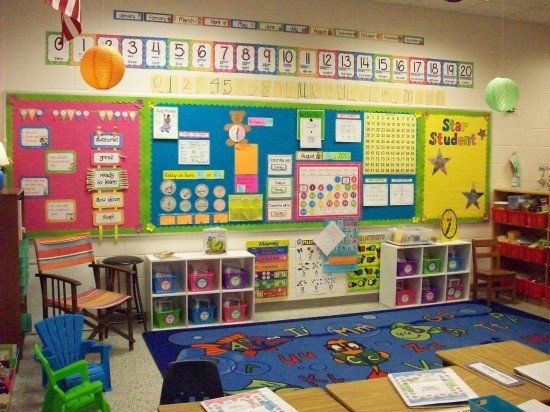
Conclusion
Preschool classroom decorations play a vital role in shaping a positive and stimulating learning environment. From engaging visual aids to creative storage solutions, every detail contributes to the cognitive, emotional, and social development of young learners. Thoughtful decor not only enhances the classroom’s aesthetics but also fosters creativity, curiosity, and a sense of belonging.
At EverWoody, we understand the importance of creating functional and inspiring classrooms. That’s why we offer wholesale solutions for customizable, eco-friendly furniture and decoration materials tailored to early childhood education needs. Whether you’re looking for space-saving furniture, durable materials, or themed decor to match your vision, we provide everything you need to transform your classroom into a vibrant hub of learning and fun. Let’s bring your classroom to life—connect with us today to get started!

